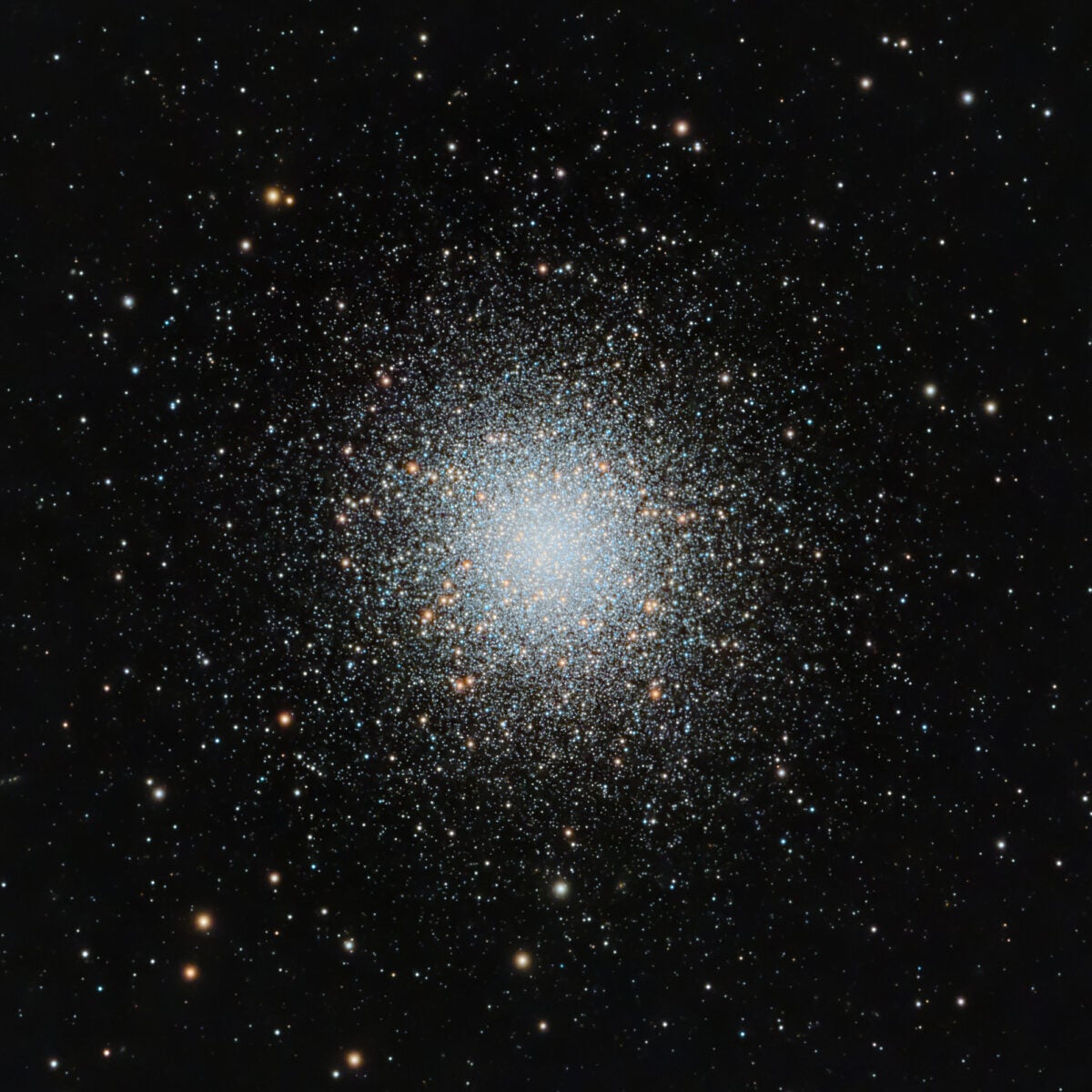
M13, better known as the Hercules Cluster, is one of the night sky’s great globular clusters. Globulars get their name for their distinct, globe-like appearance — a ball of stars that increases in density and brightness as you look closer to the core.
Unlike open clusters, which are collections of stars that form from the same nebula, globular clusters are much larger and older, and tend to orbit the Milky Way in highly inclined orbits that take them high above the disk. For these reasons, astronomers think globular clusters are the remnants of dwarf galaxies that have been accumulated by the Milky Way.
You can find the Hercules Cluster roughly one-third of the way from Vega to Arcturus. With a 6- or 8-inch telescope, you can crank up the power and start to resolve some of the stars around the edge of the cluster, which appear like glowing grains of sand against a dark background.
Follow Astronomy magazine, the world’s best-selling astronomy magazine:
🌎 Website: https://astronomy.com
📖 Subscribe: http://subscribe.astronomy.com
📘 Facebook: https://www.facebook.com/AstronomyMagazine
📸 Instagram: https://instagram.com/astronomy.magazine
𝕏: https://x.com/AstronomyMag
Shop Celestron telescopes:
🔭 Website: https://celestron.com
Follow Dave Eicher:
📘 Facebook: https://www.facebook.com/davidjohneicher
📸 Instagram: https://instagram.com/eicher.david
𝕏: https://x.com/deicherstar









